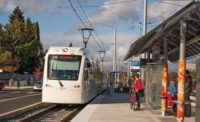Keep Infrastructure on an Upward Track

The next move for Congress is planning for an infrastructure bill, and we have ideas to help members start. While consensus will be difficult, much of the outline already exists.
First, go back to the $1.5-trillion infrastructure bill passed last July by House Democrats with little or no input from Republicans.
Although it never saw serious consideration in the Senate, that bill is a reasonable starting place. It called for $300 billion for roads and bridges, $100 billion for transit, $130 billion for schools that educate low-income children, $100 billion for building or renovating affordable housing and $65 billion for water quality. The bill also featured many programs involved in fighting climate change.
Next, Congress should pull out its copy of the American Society of Civil Engineers’ infrastructure report card released March 3.
It is a rich tapestry of information and provides a more objective lens on needs than what elected officials may collect. There’s no reason it should not help shape priorities and be a regular reference source in Capitol Hill discussions. Our first thought is that it shows the need to put more resources toward fixing electrical power grid weaknesses and adding more clean energy.
The upward trend shown in the national report card, from D-plus in 2017 to C-minus now, is a sign of the potential to do even better.
It contradicts the argument that we spend and spend and nothing seems to improve. Think of the investment and toil that elevated such a vast national inventory of structures.
The upward trend in the national report card, from D-plus in 2017 to C-minus now, is a sign of the potential to do even better. It contradicts the argument that we spend and spend and nothing improves.
To maintain that momentum, transparency must be paramount at all stages of the process.
While public works are always vulnerable to denunciations as pork picnics, the public knows that infrastructure means more than construction jobs. It is a platform for economic vitality.
Transportation, in particular, is closely associated with class mobility and the ability of poor people to hold jobs that sustain them or lift them out of poverty. That’s why the calculation of how much goes to urban transit or highways is so important.
Another important step is to guard against weighing down an infrastructure bill during the legislative sausage-making with extraneous measures that don’t belong.
That’s what happened with the COVID relief bill that just passed the Senate. Inter-party criticism led to funds cut for infrastructure projects in Silicon Valley and in New York. We hope members of both parties will keep a critical eye on and participate in infrastructure negotiations.
This is a once-in-a-generation opportunity, and all forms of financing need to stay on the table.
Failure to Act, the name of another ASCE-funded study, identifies the price. Any political stalemate that slows down an infrastructure program also imposes a cost to the taxpayers of doing nothing, which ASCE’s report calculates at $3,400 a year for every U.S. family.
The cost of failing to act will go higher and higher the longer we wait.



